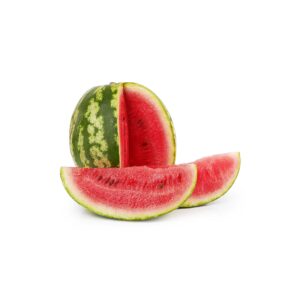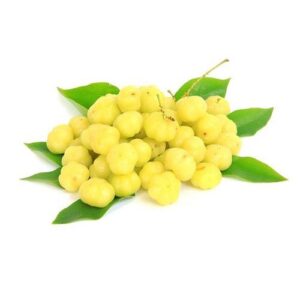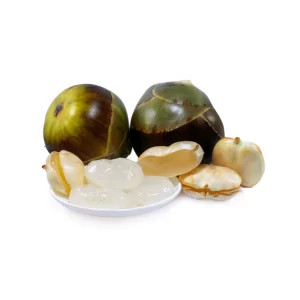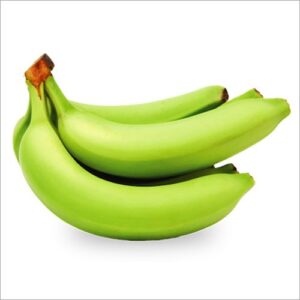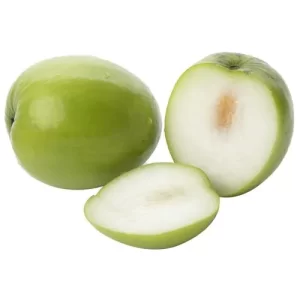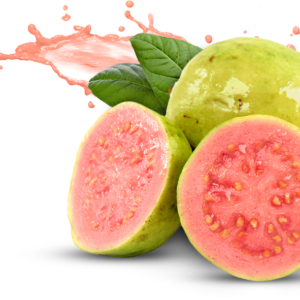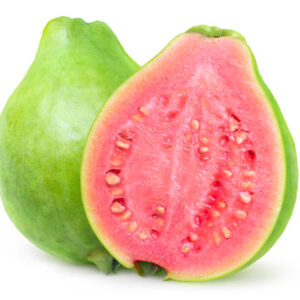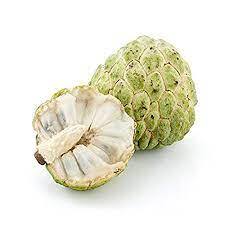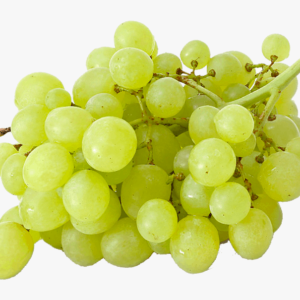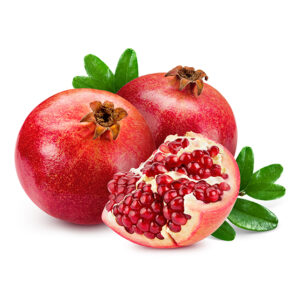-
SAPOTA CHIKU
- Promotes Gut Health. The natural plant compound tannins in sapota contain polyphenol which neutralizes acid secretion in the gut. …
- Stronger Bones. …
- Bolsters Immunity. …
- Boost Energy. …
- Healthy Skin. …
- Prevents Cancer. …
- Controls Blood Pressure.
-
BIG GUAVA
- May Help Lower Blood Sugar Levels. …
- May Boost Heart Health. …
- May Help Relieve Painful Symptoms of Menstruation. …
- May Benefit Your Digestive System. …
- May Aid Weight Loss. …
- May Have an Anticancer Effect. …
- May Help Boost Your Immunity. …
- Eating Guavas May Be Good for Your Skin.
-
WATER MALON
Watermelons are considered best for summers as they have nearly 92% water content in them and keep us hydrated. However, apart from this, the fruit also has a range of other benefits which help our body in dealing with issues that accompany hot weather.
-
-
RAYNA
- A handsome Indian evergreen tree often planted as an ornamental for its fragrant white flowers that yield a perfume; source of very heavy hardwood used for railroad ties. In olden time, the very hard timber was used for making lances.
- The leaves are applied to the head in the form of a poultice for severe colds
- Oil from the seeds is used for sores, scabies, wounds, and rheumatism The root of this herb is often used as an antidote for snake poison
- The dried flowers are used for bleeding hemorrhoids and dysentery with mucus
- Fresh flowers are also prescribed for excessive thirst, excessive perspiration, cough, and for indigestion
-
YELLOW DATES
Fresh Yellow dates are delicious dessert fruits with much needed minerals and energy to help you stay fit and healthy
-
-
TADGOLA
Tadgola is also very healthy and refreshing. The sap/ juice that is collected early in the morning has a sweet sugary taste. It is usually sold as a refreshing drink and is also called by different names in different states. Nira in Maharashtra, Thaati Kallu in Telugu and PathaNeer in Tamil. The sap that is collected in the afternoon or evening is fermented and is sour or astringent in taste and is sold as raw liquor.
-
WOOD APPLE
Wood apple is rich in thiamine and riboflavin, the chemicals that are effective in detoxifying the body. Consuming it every day in form of juice keeps the gut healthy and diminishes all sorts of kidney problems. -
-
CURRY BANANA
Banana (Musa sp.) is the second most important fruit plant in India next to mango. Its year-round availability, affordability, varietal range, taste, nutritive and medicinal value makes favourite fruit among all class of people. Curry banana is specifically used for making curry(cooking), but this Musa sapientum can be utilised for both cooking and desserts purpose. So it’s fruit can be consumed raw, cooked (deep fried, dehydrated, baked in skin, steamed). The plant height and leaf size are bigger when compared to other bananas.
-
RED BANANA
Red bananas are a subgroup of bananas from Southeast Asia with red skin. They’re soft and have a sweet flavor when ripe. Some people say they taste like a regular banana — but with a hint of raspberry sweetness. They’re often used in desserts but pair well with savory dishes, too.
Red bananas provide many essential nutrients and may benefit your immune system, heart health, and digestion.
-
ELAICHI BANANA
Elaichi bananas are smaller in size but they are nutritionally equivalent to regular bananas. But due to their little size, they have fewer calories. You may easily swap ordinary bananas for these little ones to keep your daily calorie intake under control. These little bananas are high in vitamin C and potassium, making them an excellent post-workout snack.
-
WHITE JAMUN
Seasonal fruits are a great way to boost one’s immunity levels. They not only help keep our health in good shape but are also a great way to keep unwanted hunger cravings at bay. If you have been wanting to include more local and seasonal fruits in your diet, then you may like to try white jamun or wax jambu, a variant of the black plum or black jamun.
-
-
KAMRAKH
Star fruit, also known as carambola, is a star-shaped tropical fruit with sweet and sour flavor. Star fruit is a small, bushy evergreen tree that grows very well under hot, humid, tropical conditions. The plant bears small lilac colored, bell-shaped flowers in clusters which subsequently develop into oblong shaped fruits with characteristic five angled edges (sides or ribs) that appear like a starfish in cross sections. Carambola fruit features light-green to yellow with attractive smooth waxy surface. Inside, it’s crispy, and juicy pulp can either be mildly sweet or extremely sour depending upon the variety.
Fruiting Time: Start with in a year after purchase
-
MUSK MELON
The numerous health benefits of this sweet melon can be attributed to its rich nutritional content that is necessary for healthy body functioning.
100 grams of muskmelon contains:
- Calories – 34
- Dietary fibre – 0.9 gram
- Fat – 0.19 gram
- Protein – 0.84 gram
- Carbohydrates – 8.6 grams
-
-
PAPAYA
Papayas are a soft, fleshy fruit that can be used in a wide variety of culinary ways. Here we will explore more on the health benefits, uses, how to incorporate more of them into your diet, and what nutritional value papayas have.
Papaya has a range of health benefits including asthma prevention and even anti-cancer properties.
-
-
CHANIYA BER
Jujube or ber, if you could recall, is a sweet and tarty fruit that is often offered during the festival of Maha Shivratri. This magical fruit is filled with amazing health benefits. You can literally binge upon this healthy snack option to satisfy your sweet cravings.
The arrival of this fruit also marks the beginning of Spring season in India. Jujube is widely cultivated across South Asia. What’s more, the appearance of jujube is somewhat similar to palm dates, and therefore it is often known as red dates, Chinese date, Korean date, Indian date across the globe. -
CHAMELI BER
This fruit is native to India and is called poor man fruit in India. Ber fruit has an excellent health benefits. The commercial cultivation of Ber fruit is growing day by day due to its demand, easiness of cultivation and less maintenance.
-
-
PINK GUAVA
Pink guavas are fig-shaped fruits with smooth green skin that ripens to a bright yellow. They come in pink and white varieties, but Amafruits prefers to use the pink for our purees. Their inner flesh has a sweet and musky fragrance and tastes of papaya, passion fruit, and pear. Considered by many to be the sweetest of the guava fruits, it is also a nutritional powerhouse.
-
-
CUSTURD APPLE
- Cherimoya (Annona cherimola) is a green, cone-shaped fruit with scaly skin and creamy, sweet flesh. …
- High in antioxidants. …
- May boost your mood. …
- May benefit eye health. …
- May prevent high blood pressure. …
- May promote good digestion. …
- May have anticancer properties. …
- May fight inflammation.
-
-
POMEGRANATE
Pomegranate can be recognized by its round shape, hard yellow, pink or red coloured skin and by its unusual interior flesh that contains many small edible seeds. A semi-sweet pulp surrounds each of these small seeds. Pomegranates are listed as high-fiber in some charts of nutritional value. That fiber, however, is entirely contained in the edible seeds which also supply unsaturated oils. Although the membrane is also edible, it has no flavour and is typically not eaten.
The pomegranate is a popular exotic fruit which origins from the Middle East and Asia. Also known as the Granada, Grenade and Chinese apple, pomegranates are now commonly grown in Africa, India, Malaysia, southern Europe and in the United States. Pomegranates thrive well when grown in regions where the temperature is mild and where there is little humidity.
BeFresh provides the following varieties to its customers: Wonderful, Hershkovitz, Ako and Shany.



